Google officially unveils Pixel 6 and Pixel 6 Pro devices
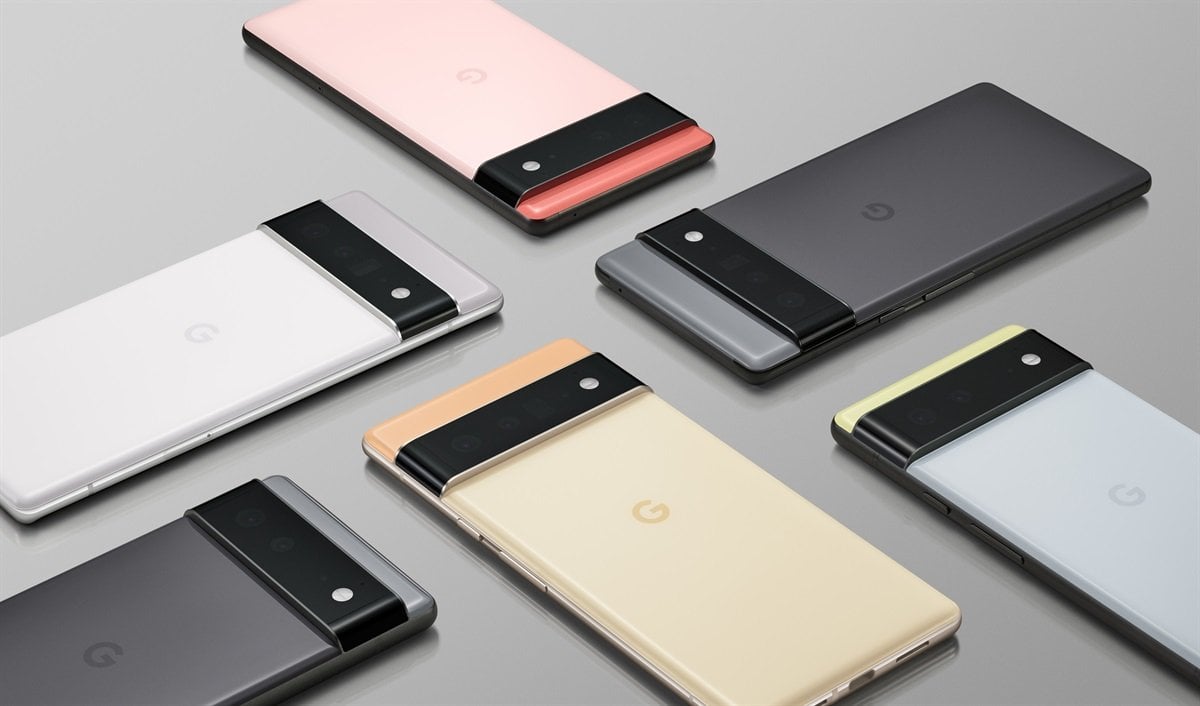
Google has finally unveiled its next generation Pixel branded smartphones. The devices have got an updated design, improved cameras and their own Tensor processors.
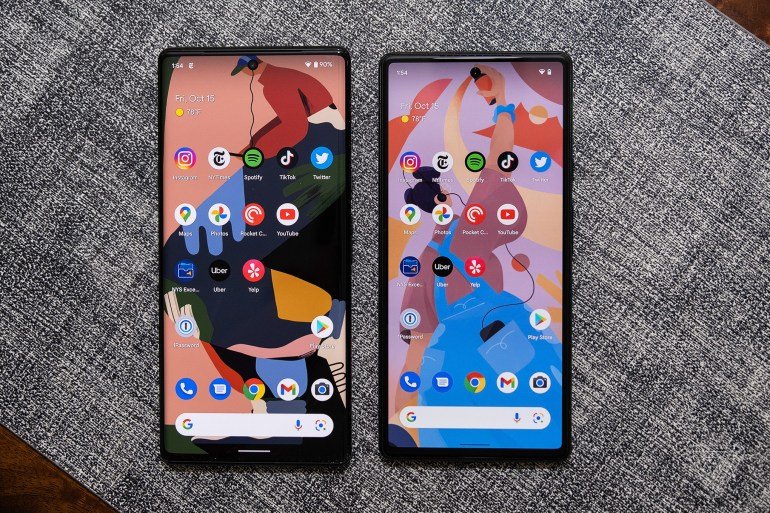
The new chipset, according to Google, will become a significant competitor for the Snapdragon 888. Tensor is based on the 5 nm process technology and has three clusters of cores: two "large" ARM Cortex-X1 with a frequency of up to 2.8 GHz (the Qualcomm chip has only one such core) , a pair of "medium" Cortex A76 at 2.25 GHz and four "small" Cortex A55 cores (1.8 GHz). Responsible for the graphics GPU Mali-G78. In addition, the chipset has TPUs (Tensor Processing Units) that accelerate the processing of AI tasks.
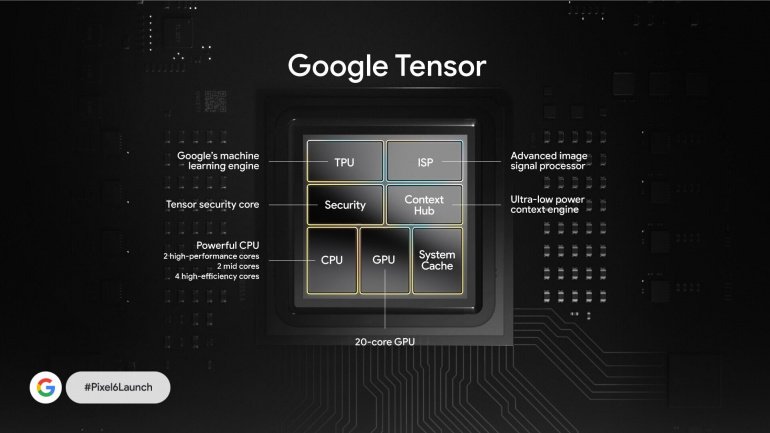
The amount of RAM for the younger and older versions will be 8 or 12 GB, respectively. The amount of internal memory in the initial configuration will be equal to 128 GB, but storage will also be available to buyers up to 256 GB (Pixel 6) and up to 512 GB (Pixel 6 Pro).
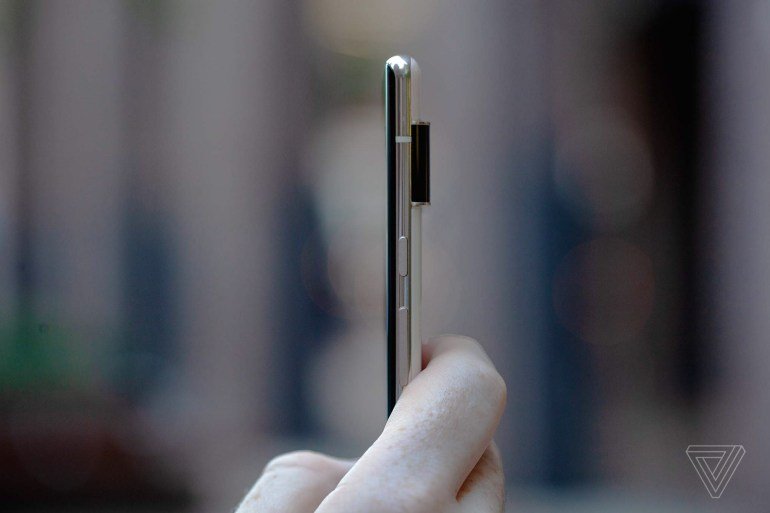
The peculiarity of the appearance of the devices is the cameras, which are significantly protruding in comparison with the body and placed in the entire width of the rear panel. The standard model received two modules, while the Pro version received three. At the same time, both smartphones got a standard "wide" and an updated ultra-wide-angle module.
The main camera has a 50MP sensor programmed to take 12.5MP photos. The sensor has a pixel size of 1.2 microns and captures 1.5 times more color compared to the Pixel 5. It is also complemented by an f/1.85 aperture lens with OIS. The ultra-wide-angle module has 12 megapixels, a pixel size of 1.25 microns, an f/2.2 lens and a 114-degree field of view. The Pro version was also equipped with a 48MP telephoto lens with 4x optical zoom. This camera is designed to take photos with a resolution of 12 megapixels. Selfie cameras on smartphones are also slightly different.
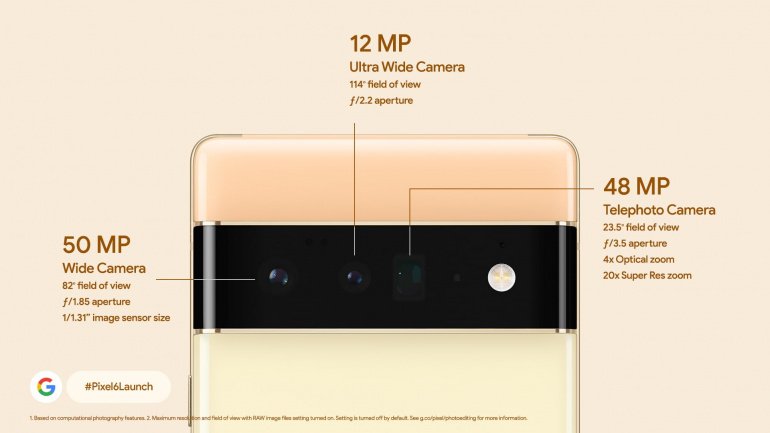
The video capabilities of the devices allow you to record 4K videos at 60 frames/sec with HDR. There is also a slow-mo mode with Full HD quality and a frequency of up to 240 frames/sec. The Tensor chip also enables the Magic eraser function, which automatically removes unwanted details from the photo.
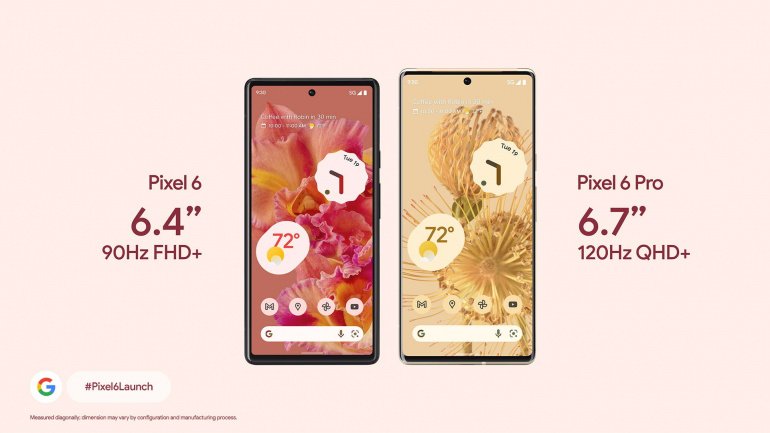
Both models received screens with a large diagonal. The Pixel 6 has a 6.4 "OLED, 90Hz 1080p display, while its bigger sibling is a 6.7" LTPO 120Hz display with rounded edges and a resolution of 1440p.
Among the additional features of the new products, it is worth noting protection against dust and moisture according to the IP68 standard, a fingerprint scanner directly in the screen, stereo sound, support for fast wired and wireless charging. Out of the box, smartphones received fresh Android 12, which Google will update until 2026. Security updates will be coming over five years.
Smartphones can already be pre-ordered, the deliveries of devices actually start on October 28. The base model starts at $599, while the Pixel 6 Pro starts at $899.
All detailed specifications are shown below:
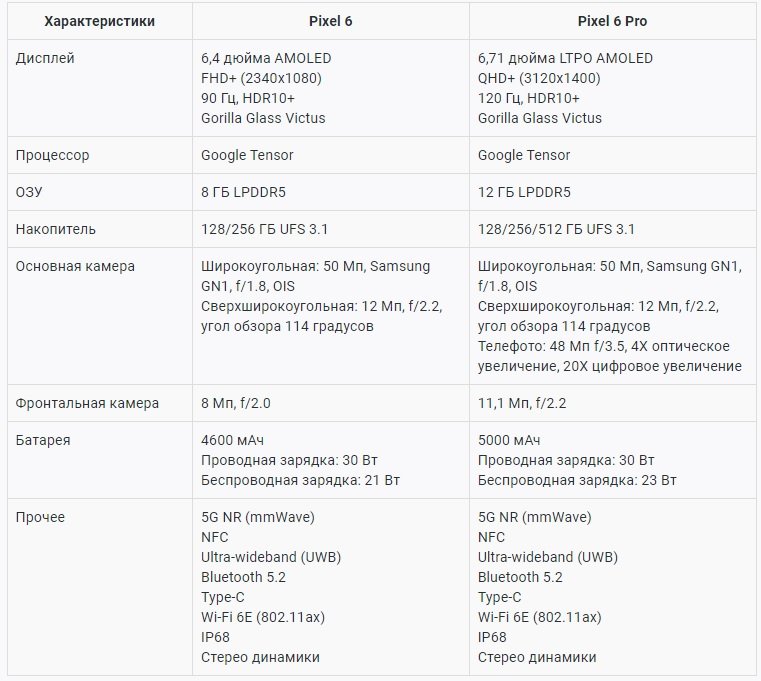

The new chipset, according to Google, will become a significant competitor for the Snapdragon 888. Tensor is based on the 5 nm process technology and has three clusters of cores: two "large" ARM Cortex-X1 with a frequency of up to 2.8 GHz (the Qualcomm chip has only one such core) , a pair of "medium" Cortex A76 at 2.25 GHz and four "small" Cortex A55 cores (1.8 GHz). Responsible for the graphics GPU Mali-G78. In addition, the chipset has TPUs (Tensor Processing Units) that accelerate the processing of AI tasks.

The amount of RAM for the younger and older versions will be 8 or 12 GB, respectively. The amount of internal memory in the initial configuration will be equal to 128 GB, but storage will also be available to buyers up to 256 GB (Pixel 6) and up to 512 GB (Pixel 6 Pro).

The peculiarity of the appearance of the devices is the cameras, which are significantly protruding in comparison with the body and placed in the entire width of the rear panel. The standard model received two modules, while the Pro version received three. At the same time, both smartphones got a standard "wide" and an updated ultra-wide-angle module.
The main camera has a 50MP sensor programmed to take 12.5MP photos. The sensor has a pixel size of 1.2 microns and captures 1.5 times more color compared to the Pixel 5. It is also complemented by an f/1.85 aperture lens with OIS. The ultra-wide-angle module has 12 megapixels, a pixel size of 1.25 microns, an f/2.2 lens and a 114-degree field of view. The Pro version was also equipped with a 48MP telephoto lens with 4x optical zoom. This camera is designed to take photos with a resolution of 12 megapixels. Selfie cameras on smartphones are also slightly different.

The video capabilities of the devices allow you to record 4K videos at 60 frames/sec with HDR. There is also a slow-mo mode with Full HD quality and a frequency of up to 240 frames/sec. The Tensor chip also enables the Magic eraser function, which automatically removes unwanted details from the photo.

Both models received screens with a large diagonal. The Pixel 6 has a 6.4 "OLED, 90Hz 1080p display, while its bigger sibling is a 6.7" LTPO 120Hz display with rounded edges and a resolution of 1440p.
Among the additional features of the new products, it is worth noting protection against dust and moisture according to the IP68 standard, a fingerprint scanner directly in the screen, stereo sound, support for fast wired and wireless charging. Out of the box, smartphones received fresh Android 12, which Google will update until 2026. Security updates will be coming over five years.
Smartphones can already be pre-ordered, the deliveries of devices actually start on October 28. The base model starts at $599, while the Pixel 6 Pro starts at $899.
All detailed specifications are shown below:






There are no comments yet :(